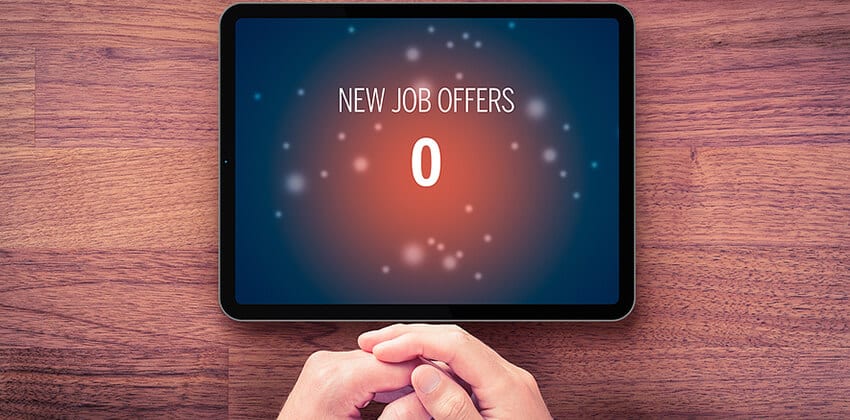
What Is Body Language?
Body language, or nonverbal communication, is what we communicate to others without saying a word. It includes things like:- Facial expressions: frowning, smiling, eye-rolling
- How we stand, sit, walk, tilt our head
- Gestures, like pointing or clapping
- Eye contact
- Touch
Why Does Body Language Matter?
Body language plays a vital role in our lives. Though we may say we’re interested in something, the fact that we’re rolling our eyes or staring at the ceiling indicates that we may feel otherwise. Having nonverbal communications that match our verbal ones is essential. If what we say doesn’t match our body language, people may think we aren’t being honest about how we feel in a situation. And this is very relevant in an interview. Your answers to the hiring manager’s questions may say one thing, but your body language may tell a completely different story! If the two don’t match up, the interviewer may have second thoughts about your application.Positive Body Language
Sending the right message starts with using positive body language. Here are some nonverbal communication tips for before, during, and after the interview. What’s more, these tips are useful for both in-person and virtual interviews.Dress Appropriately
The first nonverbal message you send starts with what you wear for the interview. While you don’t have to go with a suit and tie, wearing flip-flops and shorts with holes could send the message that you aren’t serious about the job. Dressing appropriately for the role and the industry says that you’re serious about the job, the company, and your professional success.Don’t Slouch
Sit and stand straight and tall. This includes before the interview (while you’re in the waiting room), when you walk into the interview room, and during the interview. The same thing applies to a virtual interview. Sit (or stand) up straight! Leaning back or slouching gives the impression that you’re too casual for a professional role or don’t take the interview seriously. Sitting up and even leaning a little forward sends the message that you’re serious about things and interested in what the interviewer has to say.Greetings
A firm handshake with a good grip (but not an iron one!) sends the message that you’re confident and comfortable. Of course, a handshake may not always be appropriate or possible. In that case, a wave hello is an acceptable alternative, as long as you keep it small and close to your body (like a royal or pageant wave).Look ‘Em in the Eye
Throughout the interview, maintain eye contact. This sends the message that you’re listening to what the speaker is saying. However, you should break eye contact from time to time. Staring intently into the interviewer’s eyes the whole interview could send an entirely different message! During a virtual interview, maintaining appropriate eye contact is a little tricky. It’s natural to want to look at the interviewer on your screen, but doing so means you likely aren’t looking directly into your camera, which creates the illusion that you’re not paying attention. Though many interviewers are used to this “distracted” look in a virtual interview, when you’re speaking, do your best to look at the camera, not the screen. It feels strange at first, but with some practice, you’ll get used to it and maintain virtual eye contact like a seasoned pro.Sit Still
While an interview isn’t the time for you to pretend to be a statue, it’s important not to fidget. Normal body motions are fine (think: shifting in your seat or crossing your other leg). But too much fidgeting (shifting your position every few seconds, touching your hair) is not. Fidgeting during an interview sends the message that you’re nervous or don’t want to be there (or that you need the bathroom!). Sit so your back is against the chair’s back. If that’s not possible, sit as far back as possible but still sit straight up and plant your feet firmly and flatly on the floor.Control Your Hand Motions
Using your hands while you speak is normal. However, during an interview, be aware of how you’re using your hands. Some motions can be a little too aggressive. Try not to punch or point to emphasize your words. If you gesture, keep the movement small and close to your body. If you have trouble keeping your motions small, fold your arms and hands into your lap or keep them on the chair’s arms. Or, hold a pen in one hand and a notepad in the other and take notes throughout the interview.Use Active Listening
Active listening is when we, well, actively listen! This is especially important during an interview because it conveys that you’re fully listening to the question, paying attention to, and engaging with what the speaker says. Especially in a virtual interview, don’t jump in when you think the interviewer is finished. Pause for a few seconds after they stop speaking to ensure they’re actually done, not just taking a breath or thinking something over, then answer the question. The best part of this is that those few seconds give you some time to formulate your answer! Also, make sure you’re nodding and smiling while the interviewer speaks. This helps show you’re listening and paying attention.Negative Body Language to Avoid
Positive body language sends the message that you’re engaged and interested. Negative body language sends the exact opposite message. Try to avoid these negative nonverbal communications.Too Much or Too Little Eye Contact
Though eye contact is essential during an interview, too much eye contact can be threatening and may make the interviewer uncomfortable. Likewise, too little can send the message that you’re nervous or disinterested.Nervous Behavior
No matter how nervous you are, don’t let your body language send that message. Try to avoid:- Removing lint from your clothes (that may not even be there)
- Readjusting your clothes
- Tapping your legs or feet or hands
- Clicking a pen repeatedly
- Large gestures
- Using a poker face
Keep Your Hands to Yourself
When you’re in the interviewer’s office, don’t touch anything unless it’s offered. This includes the tempting candy dish on the desk! Touching things is an invasion of personal space and a nonverbal cue that could say, “I don’t respect boundaries.”Defensive Postures
Defensive postures (like crossing your arms across your chest) send a message that you’re closed off or on high alert for attacks. Keep your arms at your sides to send the message that you’re open and relaxed or, at a minimum, comfortable.Watching the Clock
Constantly checking the time tells the interviewer that you’ve got someplace else to be! Turn your phone off, don’t look at your watch (if you wear one), and if there’s a clock in the room, ignore it until the interview is over.Shaking Your Head
When you nod your head, you’re nonverbally communicating that you agree with what the speaker is saying or acknowledging that you hear them. However, shaking your head sends the message that you disagree with them or that you don’t want to hear what they have to say.Positive Messaging
The interview is your chance to sell yourself as the right candidate for the role. And though your answers are important, your nonverbal messaging is just as crucial. Make sure you send a positive message throughout the interview process with your nonverbal communications to help you land the job.Don't forget to share this article with friends!




